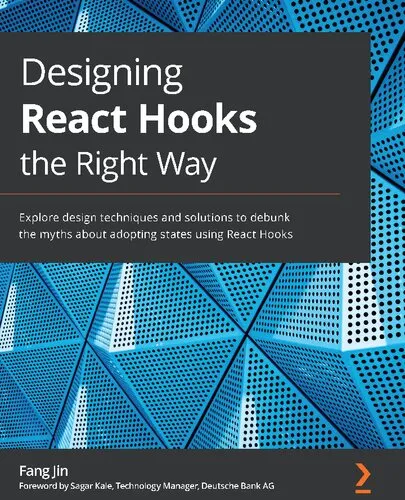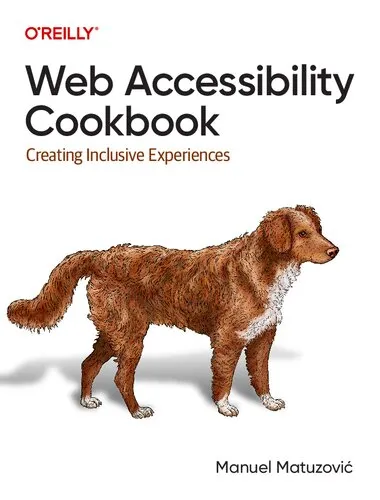The Elements of Voice First Style: A Practical Guide to Voice User Interface Design
4.5
Reviews from our users

You Can Ask your questions from this book's AI after Login
Each download or ask from book AI costs 2 points. To earn more free points, please visit the Points Guide Page and complete some valuable actions.Related Refrences:
Introduction to "The Elements of Voice First Style: A Practical Guide to Voice User Interface Design"
"The Elements of Voice First Style: A Practical Guide to Voice User Interface Design" serves as a comprehensive roadmap for designers, developers, and technologists venturing into the world of voice-first technology. As voice user interfaces (VUIs) gain prominence in our daily lives through devices like Amazon Alexa, Google Assistant, and Siri, understanding the mechanics and design principles behind these conversational interfaces becomes imperative. This book bridges the gap between creativity and technical expertise, offering actionable insights to craft high-quality, intuitive, and engaging voice-first experiences.
Voice technology is not just a passing trend; it is fundamentally changing how humans interact with technology. With the rise of smart homes, voice-driven customer service, and hands-free user interactions, we are entering an era where designing for voice is not optional but essential. Written with both clarity and depth, this guide empowers readers to build systems that are not only functional but also delightful to use.
Detailed Summary of the Book
The book is divided into carefully crafted sections that take the reader on a journey from the fundamentals of voice-first interfaces to advanced design strategies. It begins with an exploration of the growing importance of voice technology in today's world, laying the foundation for why it matters and why being voice-first is distinctly different from traditional graphical user interfaces (GUIs).
Readers are then introduced to the basic building blocks of voice design, including usability principles, conversational flow design, and persona creation. From there, the book delves into practical tips and real-world case studies, showing how to overcome common challenges such as handling errors, managing turn-taking, and ensuring accessibility for diverse user groups.
What sets this book apart is its focus on actionable guidance. Topics such as how to create natural, human-like interactions and how to design for multimodal use cases (combining voice with visual interfaces) are covered in exhaustive detail. Furthermore, emerging trends, such as voice-first commerce and the role of artificial intelligence in voice applications, are highlighted to give readers a glimpse of what lies ahead.
Key Takeaways
- Understand the unique challenges and opportunities of designing for voice-first interfaces as opposed to traditional GUIs.
- Master the principles of conversational design, including turn-taking, natural language understanding (NLU), and error recovery.
- Learn how to craft user-friendly personas for voice assistants that resonate with your target audience.
- Gain insights into how to test, iterate, and improve voice-first applications for scalability and long-term success.
- Discover emerging trends in voice technology and prepare yourself for the evolving landscape of VUIs.
Famous Quotes from the Book
"Design isn't only about what a user sees or feels; in the world of voice-first, it's about how they converse. Words are tools, and conversations are the canvas."
"In the age of voice-first technology, silence isn't absence—it's an opportunity to listen, respond, and connect."
"The best voice interfaces don’t just answer questions; they anticipate needs."
Why This Book Matters
As the global adoption of voice technology accelerates, the need for thoughtful, user-centric design becomes more urgent than ever before. This book fills a significant gap by providing both the strategic guidance and detailed technical know-how required to excel in this rapidly evolving field. Whether you are a seasoned designer looking to pivot towards voice-first platforms or a developer aiming to understand the nuances of conversational interfaces, this book equips you with the tools you need to succeed.
Most importantly, "The Elements of Voice First Style" addresses the human factor in voice-first design. It reminds us that at the core of every conversation—whether human-human or human-machine—is an interaction rooted in empathy, clarity, and trust. The lessons shared in these pages go beyond technology, promoting a design philosophy that prioritizes authentic user experiences.
In a world increasingly defined by automation, this book reminds us of the value of connection. It is not just about creating better voice apps; it is about creating meaningful interactions that elevate the everyday lives of users. That is why this book matters and why it should be a part of every voice designer’s toolkit.
Free Direct Download
You Can Download this book after Login
Accessing books through legal platforms and public libraries not only supports the rights of authors and publishers but also contributes to the sustainability of reading culture. Before downloading, please take a moment to consider these options.
Find this book on other platforms:
WorldCat helps you find books in libraries worldwide.
See ratings, reviews, and discussions on Goodreads.
Find and buy rare or used books on AbeBooks.














